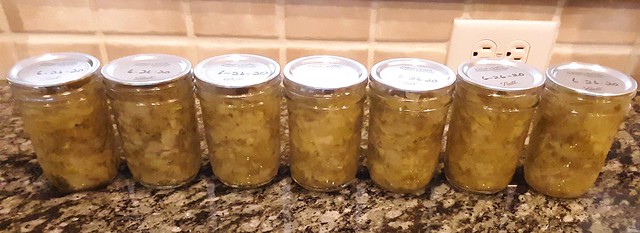Lacto-Fermented Sauerkraut
Posted: Tue Mar 24, 2020 1:34 pm
SauerKraut
I used Store bought cabbage
March 7th, 2020
Well, it has been a long time since I made some Fermented Sauerkraut.
3 tablespoons of salt per 5 pounds of shredded cabbage
I tried using a food processor with no luck, I ended up using my Boerner V-Slicer.
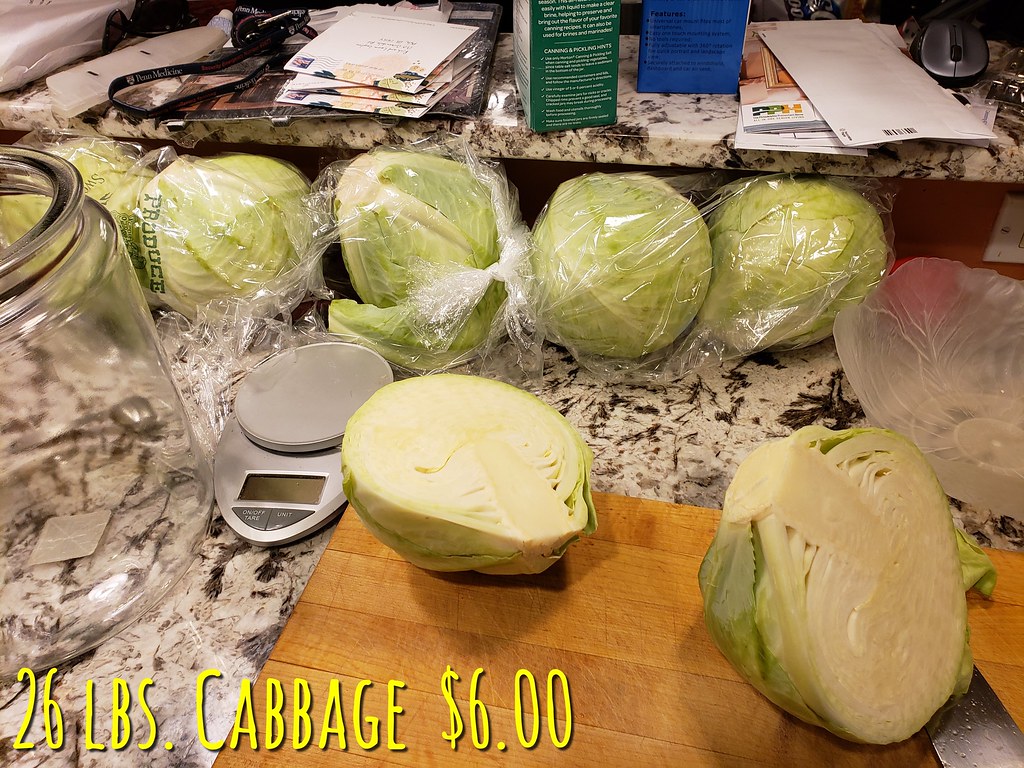
Working in 5 pound increments I would add 1/3rd of each bowl, sprinkle a little salt and continue until all 5 pounds were added then I would start shredding my next 5 pounds. This way, the salt had some time to draw out the moisture and also it was an easy way to gauge the salt-to-cabbage ratio.
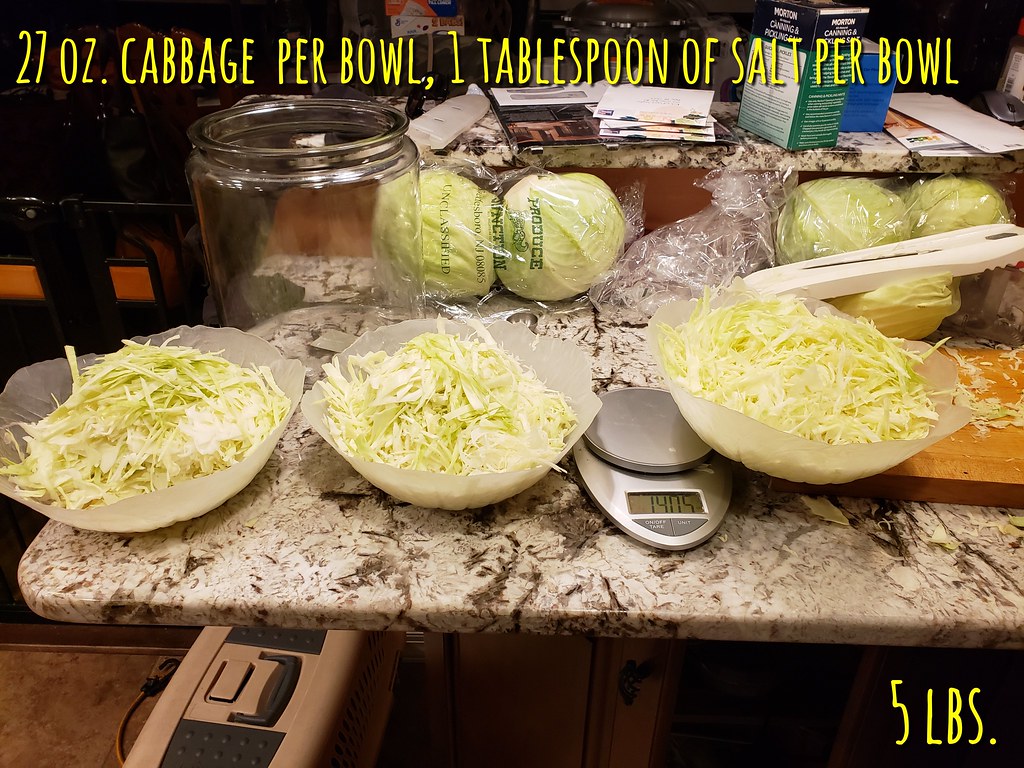
In between each 5 pounds being added, I would knead the cabbage a bit.
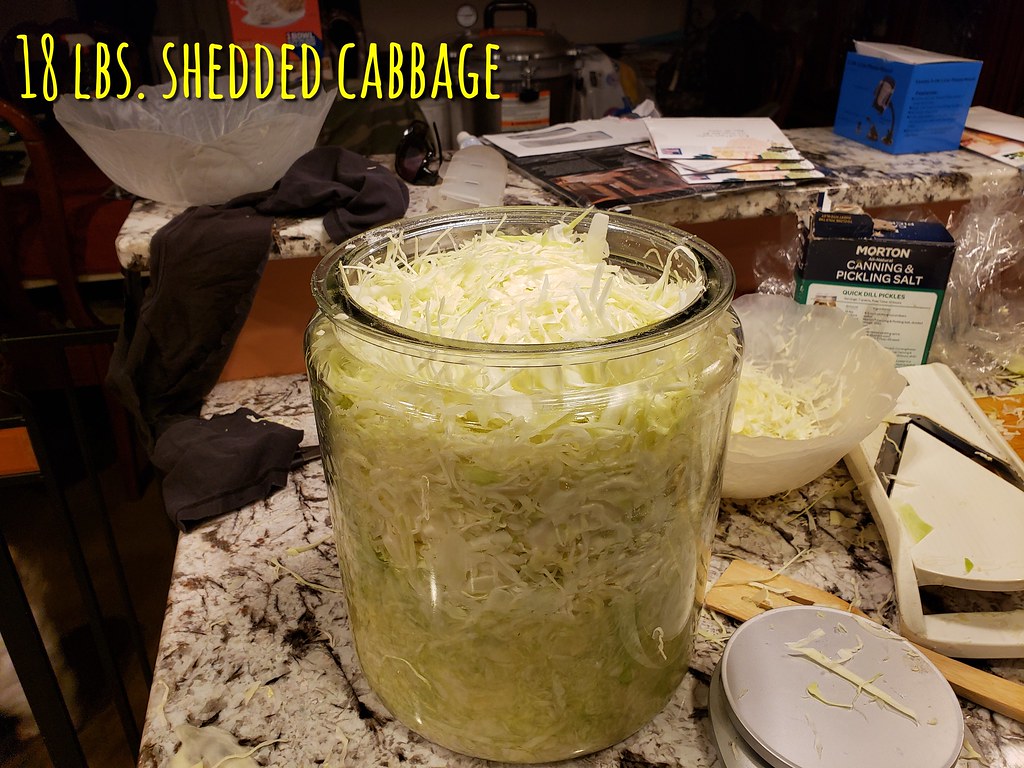



March 10th, 2020

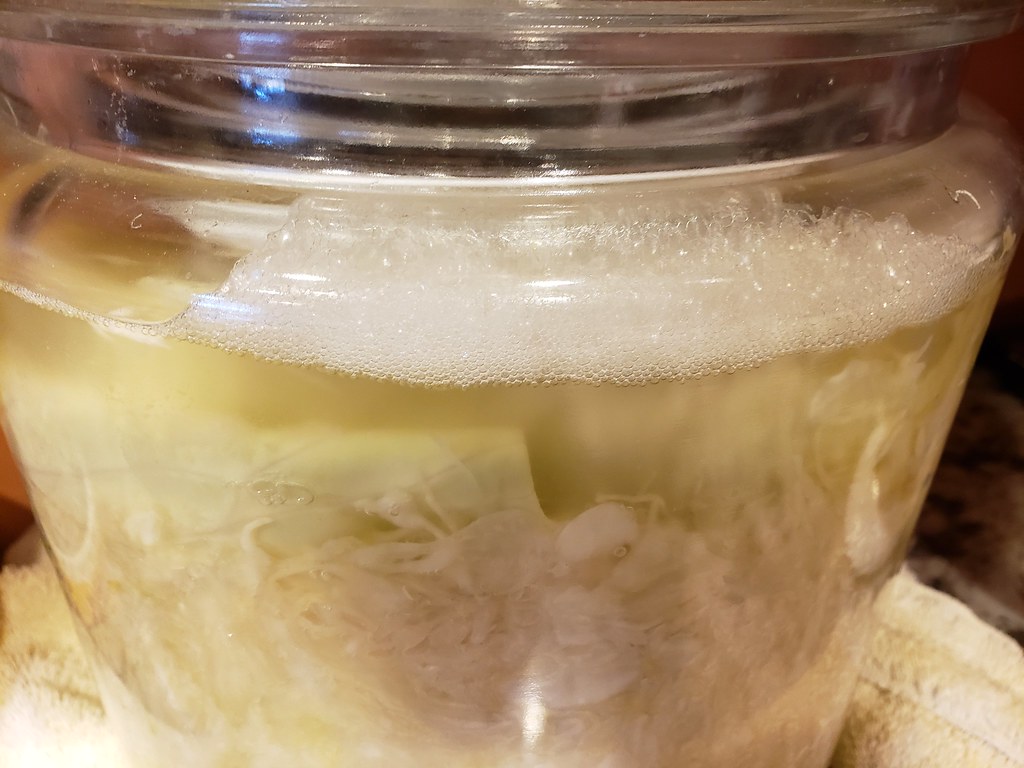
March 21st, 2020
No funky growth at all, I'm a happy camper
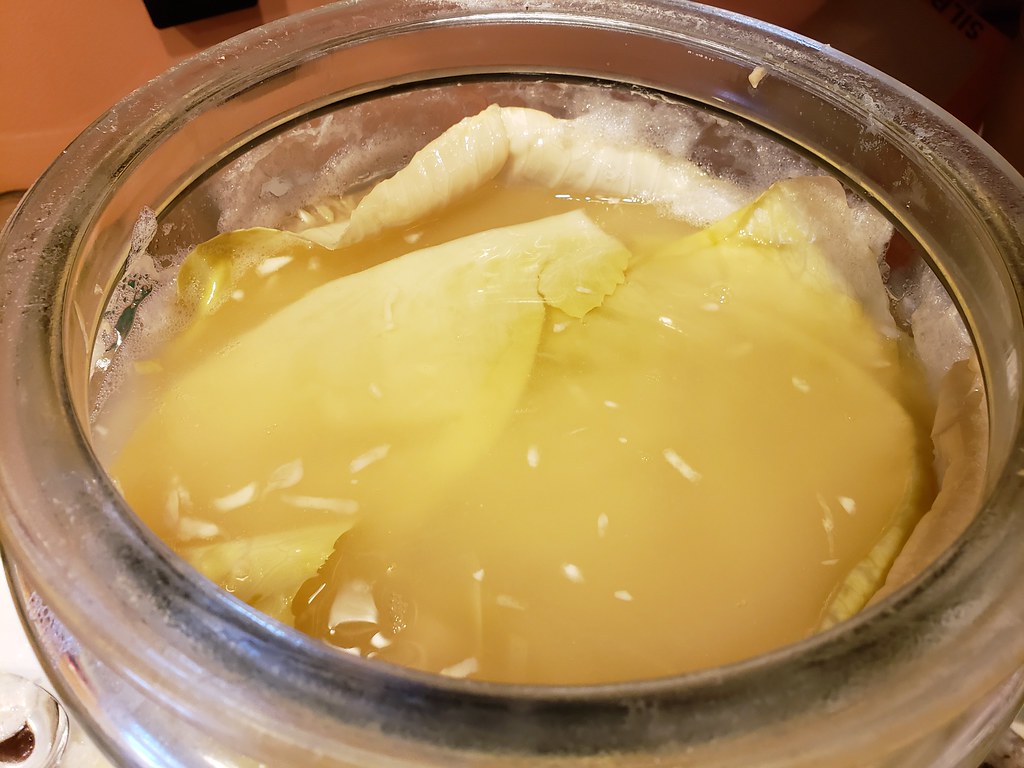
I refrigerated a 25 oz jar raw for hot dog toppings. A quick taste test and I was extremely satisfied.
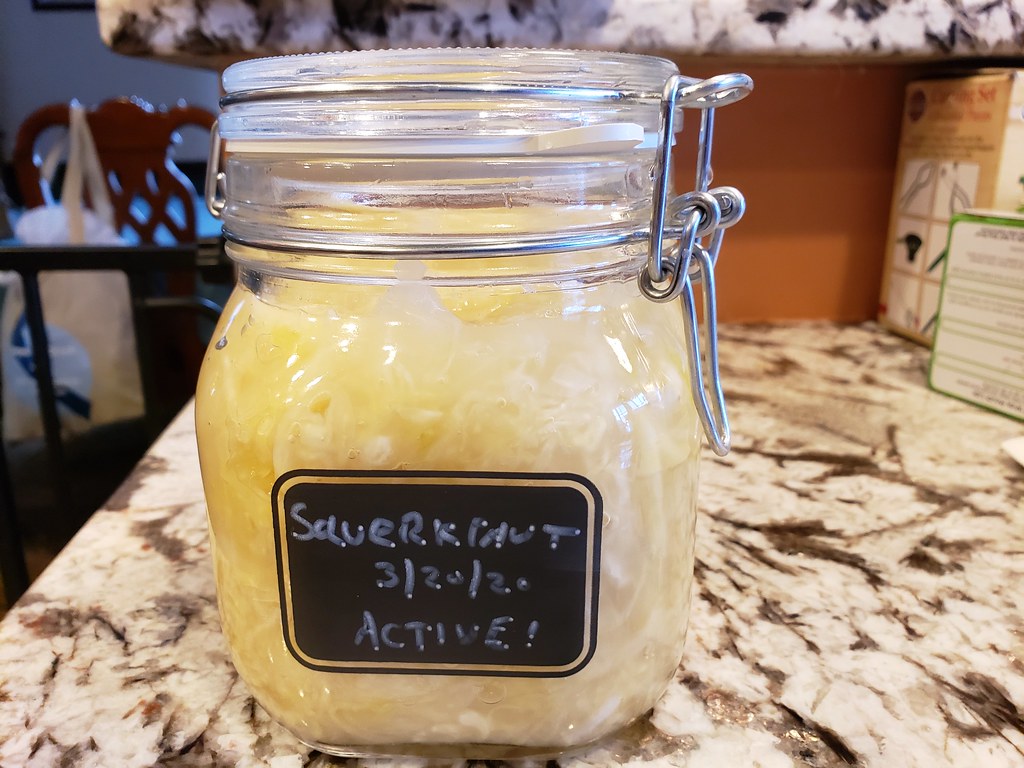
The rest was canned for storage. I had to make a salt brine to top the jars before canning. 1 quart of water to 2 tablespoons salt.

I got a little more than 8.5 quarts out of the shredded 18 pounds of cabbage (5 heads)

Procedure
Boiling water process times
Hot Pack
I used Store bought cabbage
March 7th, 2020
Well, it has been a long time since I made some Fermented Sauerkraut.
3 tablespoons of salt per 5 pounds of shredded cabbage
I tried using a food processor with no luck, I ended up using my Boerner V-Slicer.

Working in 5 pound increments I would add 1/3rd of each bowl, sprinkle a little salt and continue until all 5 pounds were added then I would start shredding my next 5 pounds. This way, the salt had some time to draw out the moisture and also it was an easy way to gauge the salt-to-cabbage ratio.

In between each 5 pounds being added, I would knead the cabbage a bit.




March 10th, 2020


March 21st, 2020
No funky growth at all, I'm a happy camper

I refrigerated a 25 oz jar raw for hot dog toppings. A quick taste test and I was extremely satisfied.

The rest was canned for storage. I had to make a salt brine to top the jars before canning. 1 quart of water to 2 tablespoons salt.

I got a little more than 8.5 quarts out of the shredded 18 pounds of cabbage (5 heads)

Procedure
- Work with about 5 pounds of cabbage at a time. Discard outer leaves. Rinse heads under cold running water and drain. Cut heads in quarters and remove cores. Shred or slice to a thickness of a quarter.
- Put cabbage in a suitable fermentation container and add 3 tablespoons of salt. Mix thoroughly, using clean hands.
- Pack firmly until salt draws juices from cabbage.
- Repeat shredding, salting, and packing until all cabbage is in the container. Be sure it is deep enough so that its rim is at least 4 or 5 inches above the cabbage. If juice does not cover cabbage, add boiled and cooled brine (1½ tablespoons of salt per quart of water).
- Add plate and weights, cover container with a clean bath towel.
- Store at 65° to 75° F while fermenting. At temperatures between 70° and 75° F, kraut will be fully fermented in about is little as 1 week but can go on to 3 to 4 weeks; at 60° to 65° F, fermentation may take 5 to 6 weeks. At temperatures lower than 60° F, kraut may not ferment. Above 75° F, kraut may become soft. If you weigh the cabbage down with a brine-filled bag, do not disturb the crock until normal fermentation is completed (when bubbling ceases). If you use jars as weights, you will have to check the kraut 2 to 3 times each week and remove scum if it forms.
- Hot pack: Bring kraut and liquid slowly to a boil in a large kettle, stirring frequently. Remove from heat and fill jars rather firmly with kraut and juices, leaving a ½-inch headspace.
- Raw pack: Fill jars firmly with kraut and cover with juices, leaving a ½-inch headspace.
Boiling water process times
Hot Pack
- Pint: 10 minutes
- Quarts: 15 minutes
- Pints: 20 minutes
- Quarts: 25 minutes
